Introduction
Nature is beautiful, but it can also be downright deadly! While we often associate the great outdoors with fresh air, stunning scenery, and wildlife, there are some hidden dangers lurking in the plant world. Imagine wandering through a picturesque forest, only to brush up against a plant that could send you straight to the hospital—or worse! You might think plants are harmless, but trust me, that’s far from the truth. Some of the world’s most innocent-looking plants are actually packed with toxins capable of causing immense harm, and sometimes even death.
In this article, we’re taking a deep dive into the 7 Deadliest Plants on Earth You Should Avoid at All Costs. These plants aren’t just bad news for curious children or wandering hikers, but for anyone who gets too close without knowing what they’re dealing with. So let’s gear up and take a closer look at these sinister species. You might just save yourself from a toxic encounter!
1. Oleander (Nerium oleander): Beauty with a Lethal Secret

Don’t let its stunning pink or white flowers fool you—Oleander is one of the most toxic plants out there. This Mediterranean-native shrub is often used in landscaping due to its striking appearance, but every single part of the plant, from the flowers to the leaves, is loaded with poisonous compounds.
Why Is It Dangerous?
Oleander contains several potent toxins, including oleandrin and neriine, both of which can have disastrous effects on the heart. Even ingesting a tiny amount can lead to symptoms like vomiting, diarrhea, irregular heart rhythms, and in severe cases, death. What’s even scarier? People have reportedly died just from using sticks from this plant to roast marshmallows!
How to Avoid It:
- If you see this plant, admire it from a distance.
- Don’t ever touch or ingest any part of it.
- Educate children about its dangers if it’s in your garden or nearby parks.
2. Deadly Nightshade (Atropa belladonna): As Deadly as It Sounds
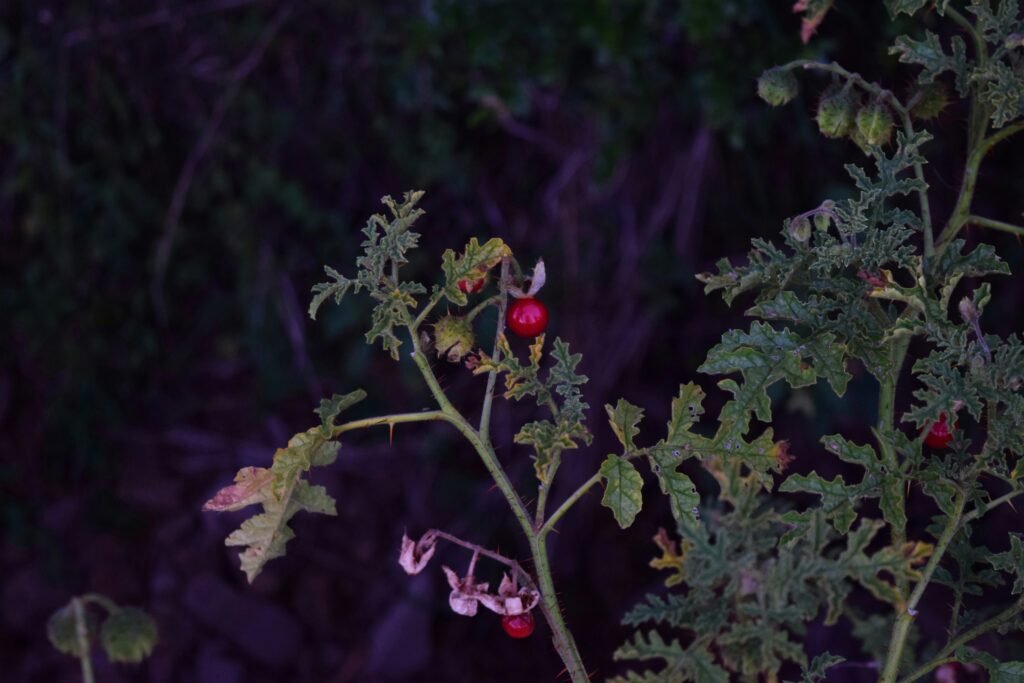
The name says it all: Deadly Nightshade is not to be trifled with. Found in parts of Europe, North Africa, and Western Asia, this plant has been used in history for nefarious purposes, including making deadly potions and even poison-tipped arrows!
What Makes It So Lethal?
This sinister plant contains atropine and scopolamine, which are potent alkaloids that can cause hallucinations, paralysis, and ultimately, death. Just a few berries or leaves can be fatal, especially for children. Even handling it can cause skin irritation and absorption of toxins.
Signs of Poisoning:
- Dilated pupils
- Sensitivity to light
- Rapid heart rate
- Seizures or coma in severe cases
How to Stay Safe:
- Never consume wild berries unless you’re 100% sure of what they are.
- Wear gloves if handling unfamiliar plants during gardening.
3. Water Hemlock (Cicuta): The Most Poisonous Plant in North America

It may look like a harmless wildflower, but Water Hemlock is anything but friendly. This innocent-looking plant is part of the carrot family and often grows near water sources like streams and ponds. But don’t mistake it for something edible—it’s one of the deadliest plants in North America.
The Deadly Factor:
Water Hemlock contains cicutoxin, a compound that attacks the nervous system. Ingesting even a small amount can cause violent seizures, respiratory failure, and death within hours. The roots are especially toxic, which makes it even riskier since they might be mistaken for wild parsnips.
What to Look For:
- The plant has white umbrella-like clusters of flowers and thick, hollow stems.
- It often grows in wetlands or along riverbanks.
Avoidance Tips:
- If you’re foraging, double-check any plant you think is safe.
- Never eat wild plants without proper identification.
4. Rosary Pea (Abrus precatorius): Pretty Beads of Death
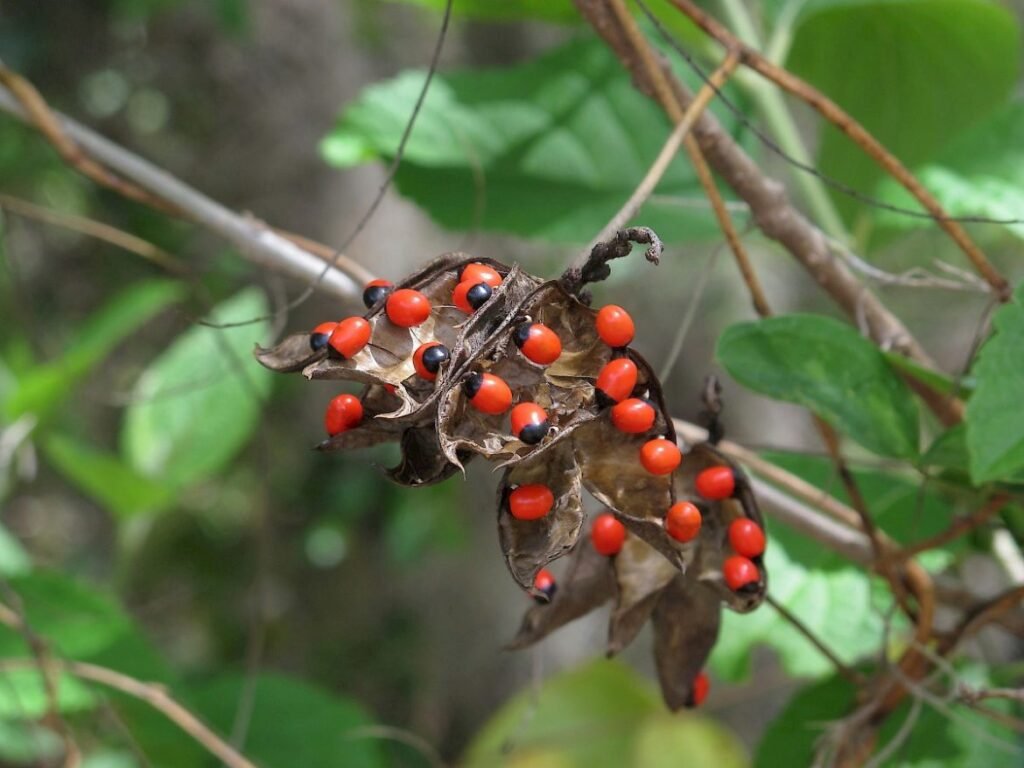
The Rosary Pea is a plant that’s as deadly as it is beautiful. Its seeds are often used to make jewelry, thanks to their bright red color and striking black spot. But this plant is no friend to humans!
Toxicity Level:
The seeds of the Rosary Pea contain abrin, one of the most toxic substances known to man. Even a tiny amount of abrin can shut down protein production in the body, leading to organ failure and death. Ingesting just one seed is enough to kill an adult. If the seed coat remains intact, it may pass through the digestive system harmlessly. But break that seed, and you’re in big trouble!
Safety Precautions:
- Avoid any jewelry or crafts made from these seeds.
- If you encounter them, don’t touch or ingest them.
- If you suspect exposure, seek immediate medical attention.
5. White Snakeroot (Ageratina altissima): Killer in Disguise
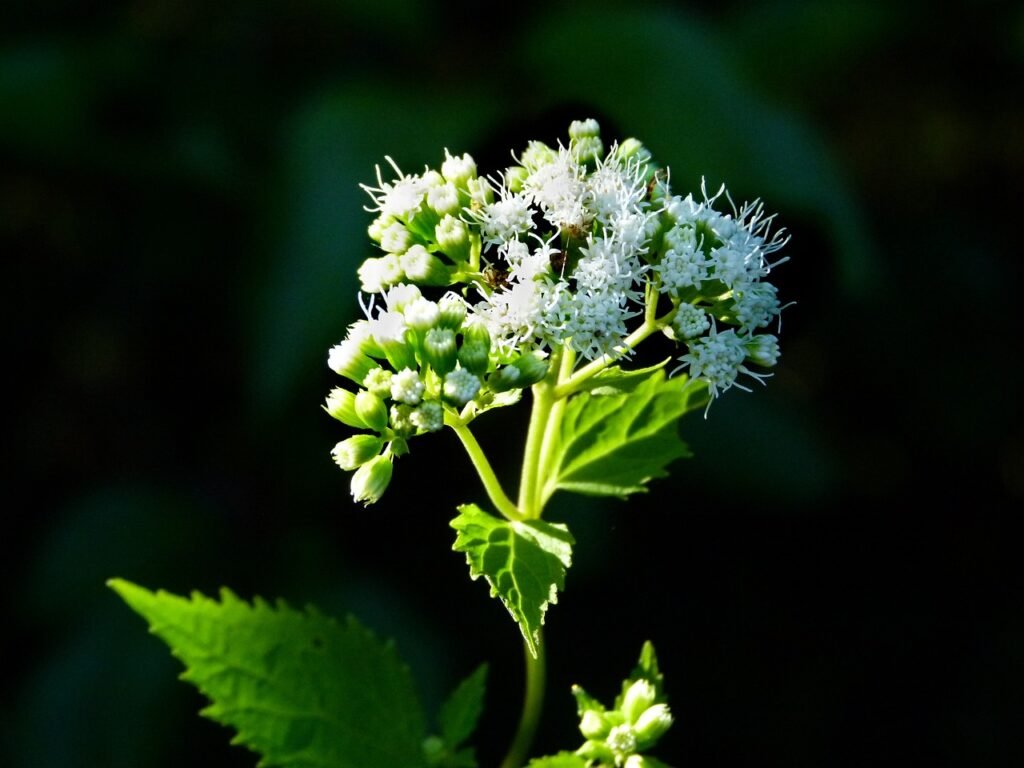
While White Snakeroot might seem like a non-threatening wildflower, it has a dark history of causing death by milk. Yes, you read that right—death by milk!
What’s the Deal with This Plant?
White Snakeroot contains tremetol, a toxin that can be ingested by livestock, particularly cows. The toxin then passes into their milk, which, when consumed by humans, causes a condition called milk sickness. This illness was responsible for many deaths in the 19th century, including that of Abraham Lincoln’s mother.
Symptoms of Milk Sickness:
- Nausea and vomiting
- Muscle stiffness
- Abdominal pain
- Death in severe cases
Avoidance Tips:
- Don’t consume milk from unknown or unregulated sources, especially in areas where White Snakeroot grows.
6. Castor Bean (Ricinus communis): The Ricin Plant
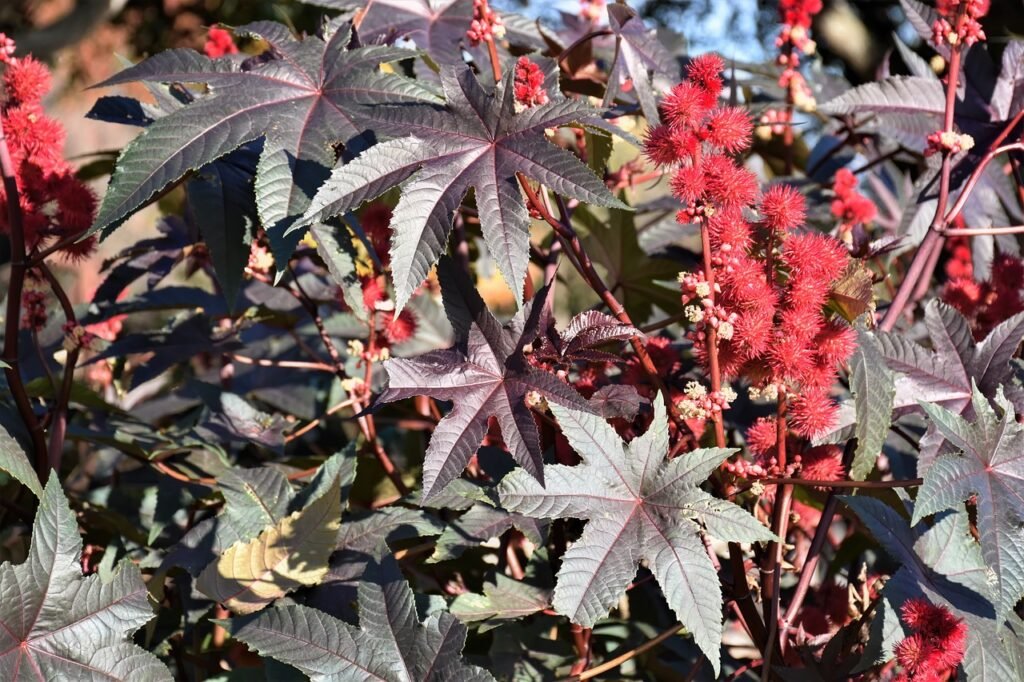
You might recognize the name ricin from spy movies and TV dramas, but the truth is, ricin is derived from a real plant: the Castor Bean plant. Often grown for ornamental purposes and to produce castor oil, this plant hides a deadly secret.
The Deadly Component:
Ricin is found in the seeds of the Castor Bean plant, and it’s highly toxic if inhaled, injected, or ingested. It prevents cells from making proteins, leading to cell death, organ failure, and, eventually, death. While castor oil is safe (thanks to a thorough refining process), the raw seeds are deadly.
Protect Yourself:
- Never consume castor seeds.
- Keep this plant far from children and pets.
- Handle with gloves if you need to work with the plant.
7. Giant Hogweed (Heracleum mantegazzianum): Sunburn from Hell
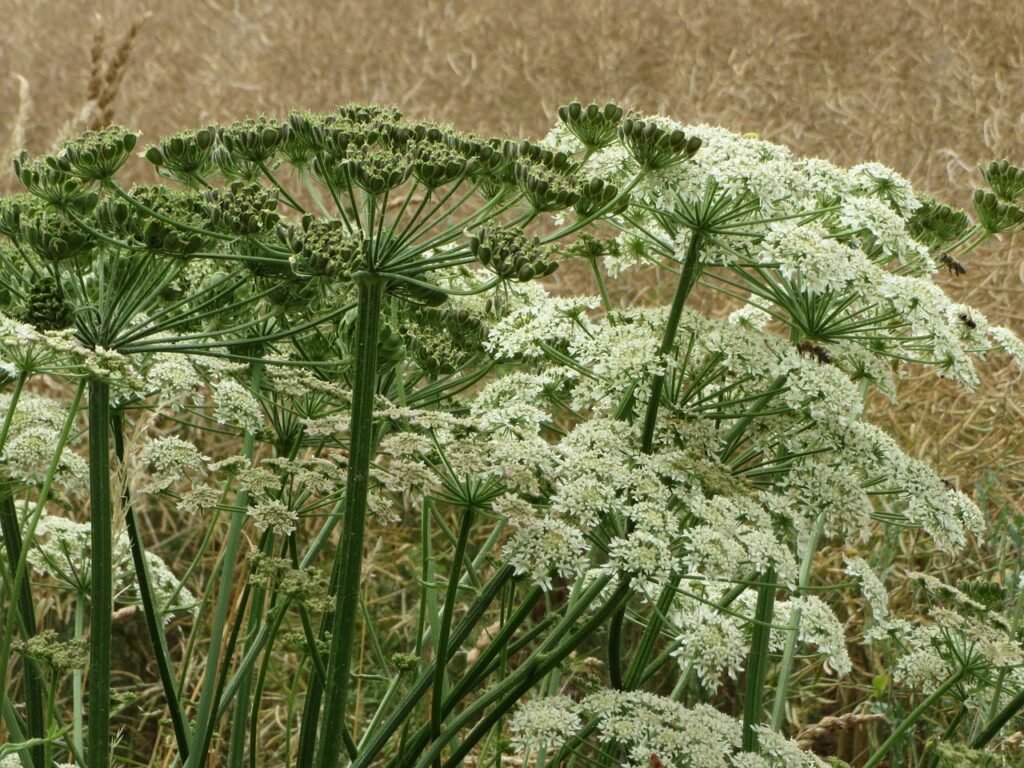
Last but definitely not least on our list of 7 Deadliest Plants on Earth You Should Avoid at All Costs is Giant Hogweed. This towering, invasive plant can grow over 14 feet tall and has a dangerous side effect that might surprise you.
What’s So Bad About Giant Hogweed?
While it won’t poison you if ingested, Giant Hogweed’s sap is phototoxic. If it gets on your skin and is exposed to sunlight, it can cause severe burns, blisters, and even long-term scarring. Some people have been left with permanent sensitivity to sunlight after exposure!
Key Characteristics:
- Giant Hogweed has large, umbrella-like clusters of white flowers.
- Its leaves are massive, with deep lobes and serrated edges.
Safety Tips:
- Avoid contact with this plant altogether.
- If sap gets on your skin, wash immediately and cover the area to prevent sunlight exposure.
FAQs
Q: Can touching these plants make me sick?
A: Yes! Some plants, like Giant Hogweed and Deadly Nightshade, can cause harm just by touching them. Be cautious and avoid contact if you’re unsure about the plant.
Q: Are all parts of these plants dangerous?
A: bsolutely. In most cases, every part of the plant, including leaves, flowers, and seeds, can be toxic.
Q: What should I do if I suspect poisoning from one of these plants?
A: Seek immediate medical attention. Don’t wait for symptoms to worsen!
Conclusion
Mother Nature has a fierce side, and as beautiful as plants can be, some are downright dangerous. The 7 Deadliest Plants on Earth You Should Avoid at All Costs serve as a reminder that not everything green is good for you! Whether you’re hiking, gardening, or even picking out plants for your home, make sure you know what you’re dealing with. A little knowledge could save you from a world of hurt—or worse! Stay safe out there!
